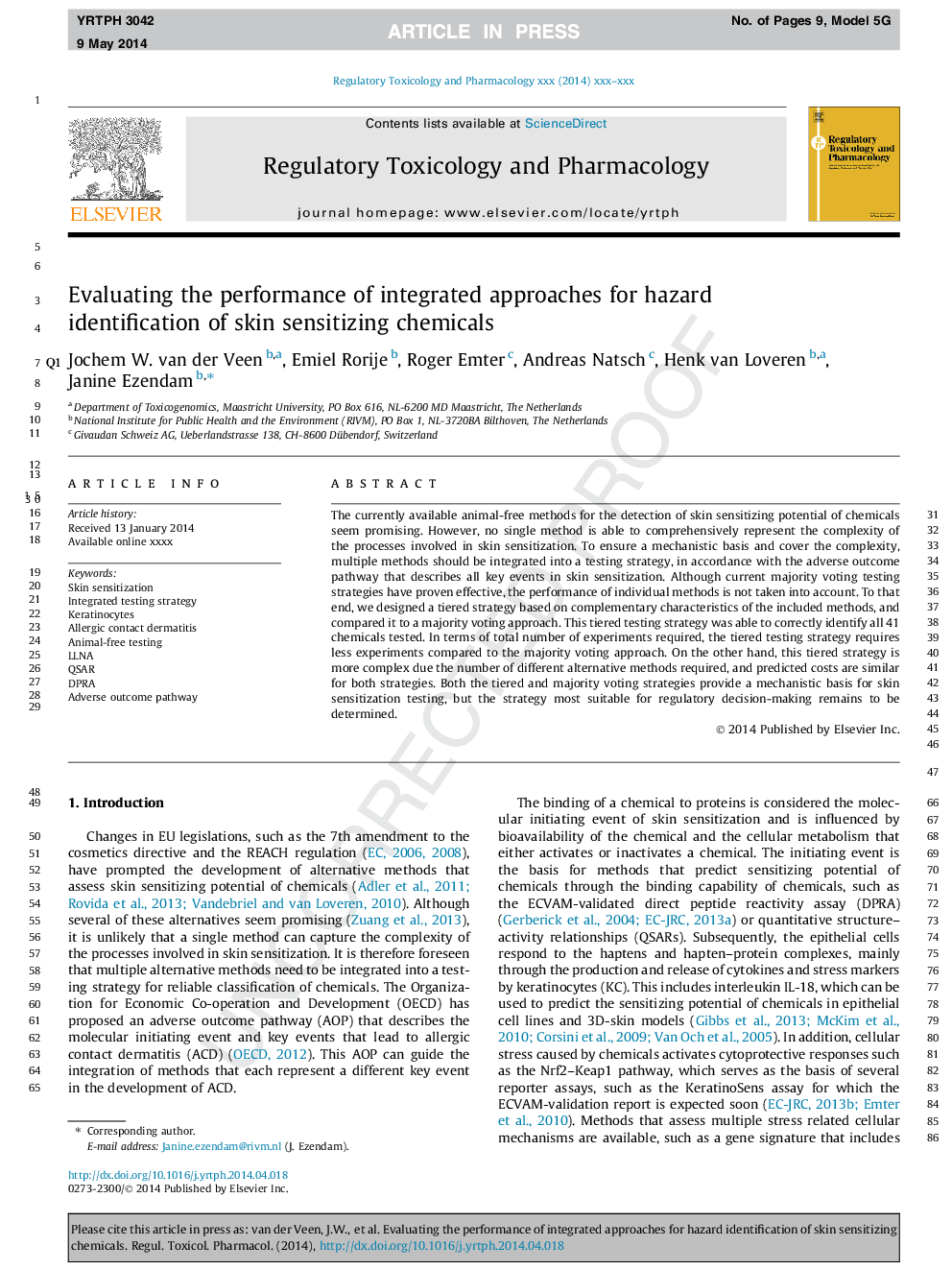| Article ID | Journal | Published Year | Pages | File Type |
|---|---|---|---|---|
| 5857038 | Regulatory Toxicology and Pharmacology | 2014 | 9 Pages |
Abstract
The currently available animal-free methods for the detection of skin sensitizing potential of chemicals seem promising. However, no single method is able to comprehensively represent the complexity of the processes involved in skin sensitization. To ensure a mechanistic basis and cover the complexity, multiple methods should be integrated into a testing strategy, in accordance with the adverse outcome pathway that describes all key events in skin sensitization. Although current majority voting testing strategies have proven effective, the performance of individual methods is not taken into account. To that end, we designed a tiered strategy based on complementary characteristics of the included methods, and compared it to a majority voting approach. This tiered testing strategy was able to correctly identify all 41 chemicals tested. In terms of total number of experiments required, the tiered testing strategy requires less experiments compared to the majority voting approach. On the other hand, this tiered strategy is more complex due the number of different alternative methods required, and predicted costs are similar for both strategies. Both the tiered and majority voting strategies provide a mechanistic basis for skin sensitization testing, but the strategy most suitable for regulatory decision-making remains to be determined.
Keywords
Related Topics
Life Sciences
Environmental Science
Health, Toxicology and Mutagenesis
Authors
Jochem W. van der Veen, Emiel Rorije, Roger Emter, Andreas Natsch, Henk van Loveren, Janine Ezendam,
